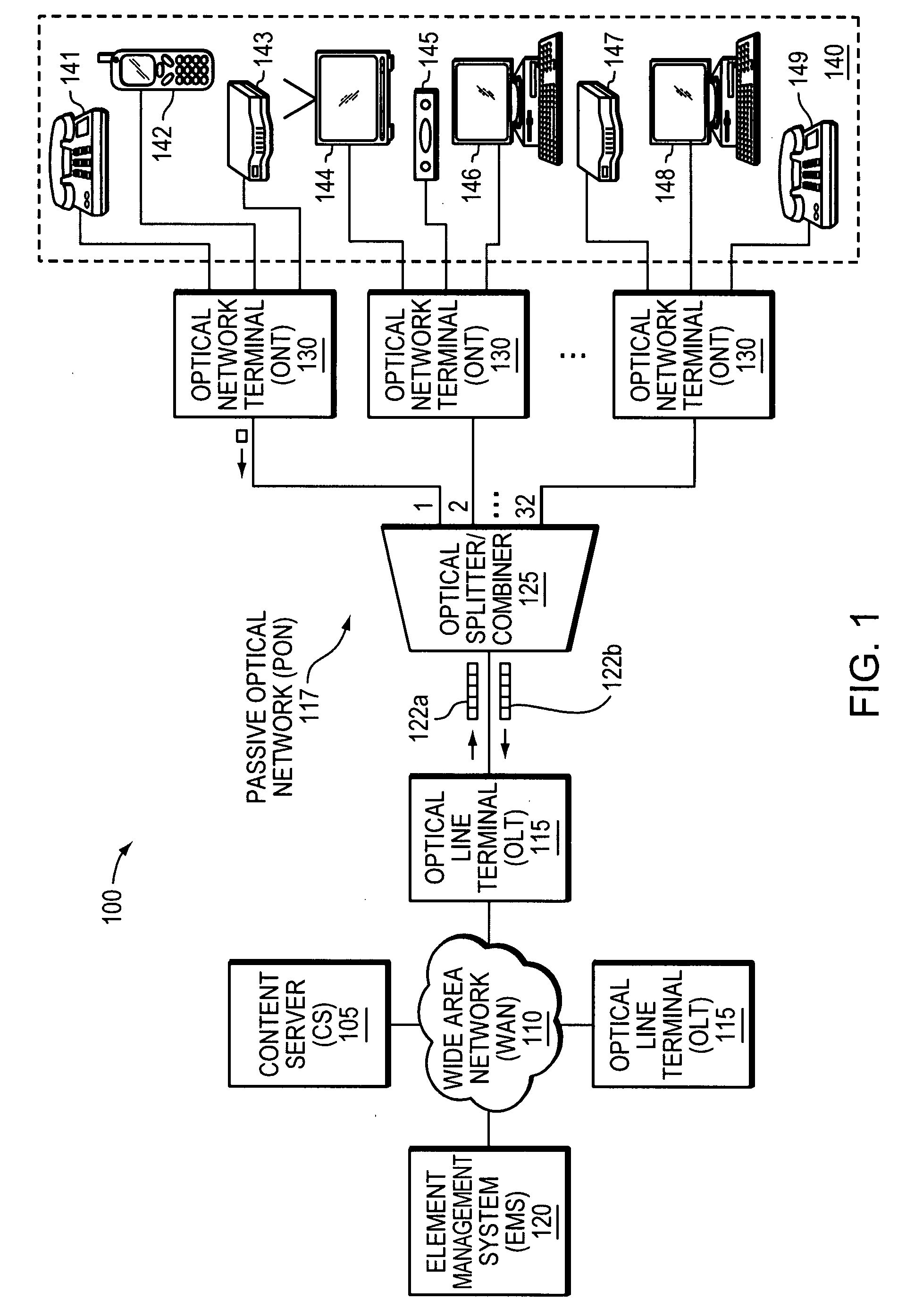Method and apparatus to provide bonded optical network devices
a technology of optical network devices and optical network devices, applied in the direction of electrical devices, multiplex communication, transmission, etc., can solve the problems of increasing customer demand for ont port combinations that are not currently supported, limited throughput, and high development and support costs
- Summary
- Abstract
- Description
- Claims
- Application Information
AI Technical Summary
Problems solved by technology
Method used
Image
Examples
Embodiment Construction
[0023]A description of example embodiments of the invention follows.
[0024]FIG. 1 is a block diagram of an example network 100 in which example embodiments of the present invention may be employed. The network 100 includes a Wide Area Network (WAN) 110 and a Passive Optical Network (PON) 117. The WAN 110 may be a network such as the Internet, and the PON 117 is typically a more localized network in which optical signals, used to transmit information, traverse passive optical elements, such as splitters and combiners, to be communicated between network nodes.
[0025]The example network 100 of FIG. 1 includes one or more Optical Line Terminals (OLTs) 115, an Element Management System (EMS) 120, and a Content Server (CS) 105, all connected, generally, by the WAN 110. In the example network 100, each OLT 115 transmits / receives information in the form of a frame of packets 122a, 122b embodied on optical signals to / from an optical splitter / combiner (OSC) 125 to communicate with, for example,...
PUM
 Login to View More
Login to View More Abstract
Description
Claims
Application Information
 Login to View More
Login to View More - R&D
- Intellectual Property
- Life Sciences
- Materials
- Tech Scout
- Unparalleled Data Quality
- Higher Quality Content
- 60% Fewer Hallucinations
Browse by: Latest US Patents, China's latest patents, Technical Efficacy Thesaurus, Application Domain, Technology Topic, Popular Technical Reports.
© 2025 PatSnap. All rights reserved.Legal|Privacy policy|Modern Slavery Act Transparency Statement|Sitemap|About US| Contact US: help@patsnap.com



